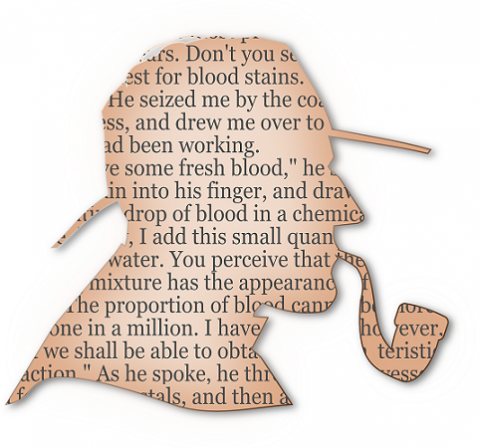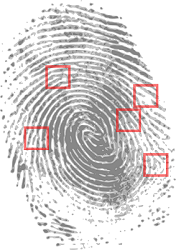
When the word “mystery” is typed into the HRL catalog search, over 14,000 titles appear. Our digital resources add thousands more to the list. As a mystery fan, I love all these choices! But as a library patron, I know that having all those choices can be overwhelming. How do I choose the best book for me? Knowing and understanding the different categories of mysteries is the key to narrowing your search and finding your next great read.
The mystery genre is divided into several sub-genres or sub-categories. Though there are numerous sub-genres, most can be placed within 7 main types.
1. Classic/Traditional
In these mysteries there is a crime committed, usually a murder, in a closed social setting. For example, a small village, university, or club. The murder is solved by a professional or amateur detective by asking questions and finding clues. The murder is solved and the murderer caught by the end of the story.
Look for these authors: Agatha Christie, Arthur Conan-Doyle, P.D. James, and Ruth Rendell.
2. Crime 
These novels focus on the planning or committing of a crime and offer detailed descriptions of the criminal and criminal underworld from perspective of those who live in it.
Look for these authors: Agatha Christie, Arthur Conan-Doyle, Tana French, and Michael Connelly.
3. Police Procedurals/Hardboiled
These are like crime mysteries but instead of focusing on the criminal, they focus instead on the police investigation. More recent procedurals will include the latest scientific forensic technology.
Look for these authors: James Patterson, Michael Connelly, J.D. Robb, Patricia Cornwall, and James Lee Burke.
4. Noir
Mysteries like these are atmospheric, stark, and gritty. Classic Noir protagonists are complex characters who are flawed, risk takers and often self-destructive.
Look for these authors: Dashiell Hammet, Walter Mosely, Raymond Chandler, Steig Larsson, Elmore Leonard and Mickey Spillane.
5. Gumshoe/Private Detective
Novels in this category focus on the professional investigator. There are no amateurs here. He or she is tough, experienced, and often an ex-cop or ex-military.
Look for these authors: Walter Mosley, Sara Paretsky, Alan C. Bradley, and Raymond Chandler.
6. Cozy Mysteries
Like classic mysteries in that the crime will take place around a small or closed setting, for instance an inn or summer house. They may involve a specific set of people like crafters, bakers, or knitters or otherwise stick to a theme. The mystery is solved and perpetrator caught at the end of the story. Cozy mysteries are defined by their lack of graphic violence, explicit sex, or foul language. The tone can be serious but often is lighthearted, playful, or humorous.
Look for these authors: M.C. Beaton, Donna Andrews, Susan Albert Wittig, Ellery Adams, and Janet Macomber.
7. Capers
They include one or more crimes that are open to the reader, they happen in plain view. Often the crooks are a bunch of colorful misfits and the police or authorities are inept or bumbling. Planning and the execution of the crimes, like theft, kidnapping or swindling is the story focus, not the solving of the crime.
Look for these authors: Donald E. Westlake, Janet Evanovich, Lawrence Block, Elmore Leonard, and Richard Stark.
This list provides a framework to understand mystery sub-genres but it is not comprehensive and there is considerable overlap from one sub-genre to the next. Many novels fit into more than one category. For example, Historical Mysteries are set in the past and conjure another time and place, but could have elements of classic, cozy, or noir novels.
If you would like to learn more, check out Novelist, a great reader’s advisory resource on the HRL website. It can help you search for read-alikes of titles and authors, as well as tracking down books with a similar sub-genre or theme. It's even linked to our library catalog! Just look for the Series & Read-Alikes link in the left-hand menu the next time you're looking up a book in our catalog.